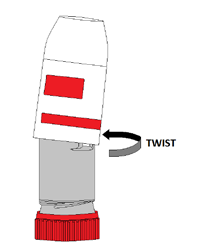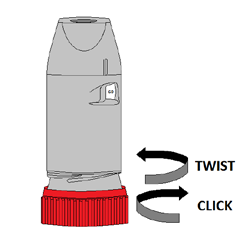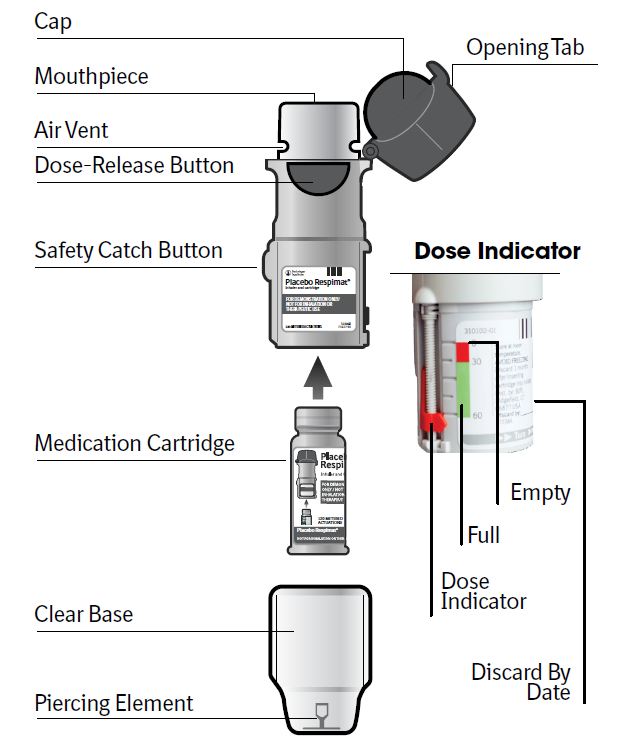Asthma Inhalers
How should I use an inhaler?
There are different types of inhalers – metered dose inhaler (MDI), breath activated inhaler, and dry powder inhaler. Follow these instructions below for the type of inhaler prescribed.
There are always new inhalers being developed. If your inhaler is not listed here, follow the package insert regarding how to use the inhaler.
If you use more than one kind of inhaled medicine at a time, the rescue/reliever medicine (such as albuterol) should be taken first to open the airways. This helps the other medicine(s) go deeper into the lungs, so they will work better.
How do I know if my inhaler is empty?
Don't Run Out
Most inhalers have counter windows so you know how many doses are left. Call your pharmacy to request a refill for more medicine in advance, when the number of puffs or doses remaining is about 10. If it says 0, no medicine remains, and you should throw it away and use a new inhaler.
Metered dose inhaler (MDI)
A metered dose inhaler is used with a spacing device, also called a spacer or holding chamber. It helps the mist reach deeply into the lungs. If you are not able to hold your breath for 10 seconds, you may need to use a spacer with a mask.
Prepare the inhaler:
- Remove the caps from the inhaler and the spacer.
- Shake the inhaler well (about 5 seconds) to mix the medicine.
- If the inhaler is new or has not been used in the past 2 weeks, prime it first by spraying 2-4 times into the air before inhaling a dose.
- Insert the inhaler into the spacer.
Using a spacer without a mask
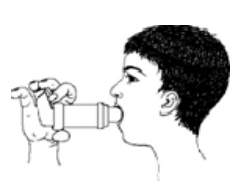
- Breathe out slowly all the way to empty the lungs.
- Put the mouthpiece into your mouth, over your tongue, between your teeth and close your lips around it.
- Press down on the inhaler as you start to breathe in slowly and deeply through your mouth.
- Hold your breath for 10 seconds to let the medicine stay in the lungs and airways.
- Remove the mouthpiece from your mouth and exhale slowly.
- Wait about 1 minute between puffs of the rescue medicine. There is no need to wait between puffs of the controller medicine.
Using a spacer with a mask
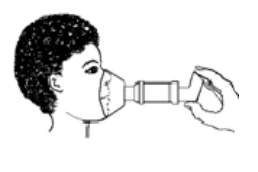
- Put the mask over nose and mouth.
- Press down on the inhaler.
- Keep the mask sealed around the nose and mouth and breathe in and out for 3 to 5 breaths.
After using your MDI inhaler:
If you are using a steroid (controller) inhaler, rinse your mouth with water and spit it out. Follow directions on the package to clean your spacer.
Redihaler (Breath activated HFA)
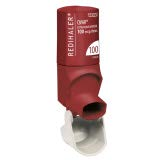
- Open the cap.
- Hold the inhaler upright.
- Breathe out completely to empty the lungs, but not into the mouthpiece.
- Place the mouthpiece between your lips so you can form a good seal.
- Breathe in deeply through the mouth to release the medicine. You will hear a “click” when the medicine comes out so keep breathing in.
- Hold your breath for 10 seconds.
- Breathe out slowly away from the inhaler.
- Close the cap.
- If a second dose is needed, repeat the previous steps.
Note: If your child is young and needs to use a spacer, it is possible to make the Redihaler work like an MDI inhaler. An example is the Qvar Redihaler. Your medical provider or respiratory therapist will show you how to use it this way if needed.
Dry powder inhaler: Diskus
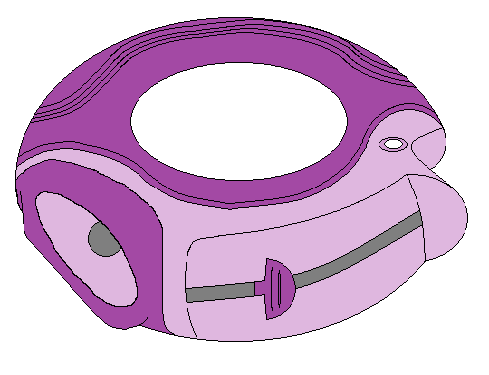
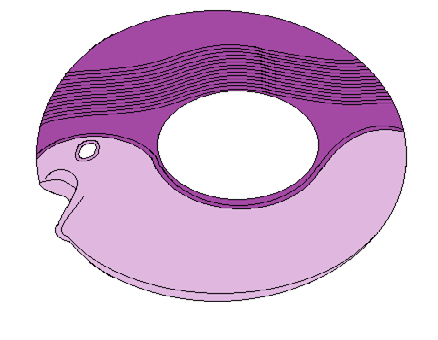
- Hold the Diskus in one hand. Push the thumb grip back as far as it will go, until the mouthpiece appears and snaps into place.
- Hold the Diskus level, with the mouthpiece towards you. Slide the lever all the way until it clicks.
- Turn your head away from the Diskus and breathe out completely to empty the lungs. (Note: Do not shake or exhale into it.)
- Put the mouthpiece between your lips. Breathe in steadily and deeply, as quickly as you can. You are creating the force that pulls the powder dose out.
- Remove the Diskus from your mouth.
- Hold your breath for 10 seconds. Then breathe out slowly.
- Close the Diskus by sliding the thumbgrip back as far as it will go.
- Rinse your mouth and spit without swallowing.
Dry powder inhaler: Flexhaler
Priming the Flexhaler
A new Flexhaler should be primed once before its first use. Follow these steps:
- Turn the cover and lift it off.
- Hold the Flexhaler upright, with mouthpiece up.
- Twist the brown grip fully to the right and back again to the left.
- Repeat the twisting motion until it clicks. Now it is ready for use.
Using the Flexhaler
- Twist the cover and lift it off. Hold the Flexhaler upright (mouthpiece up).
- Twist the brown grip to the right as far as it will go, then back to the left until it clicks.
- Turn your head away from the Flexhaler and breathe out completely to empty the lungs. (Note: Do not shake or exhale into it.)
- Put the mouthpiece between your lips and inhale deeply and forcefully to fill your lungs.
- Remove the Flexhaler from your mouth.
- Hold your breath for 10 seconds. Then breathe out slowly.
- Repeat the previous steps again, if a second puff is prescribed.
- When finished, replace the cover and twist shut.
- Rinse your mouth and spit without swallowing.
Dry powder inhaler: Ellipta
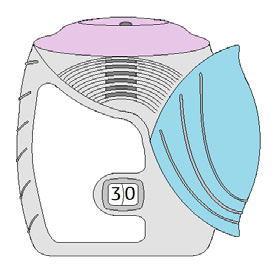
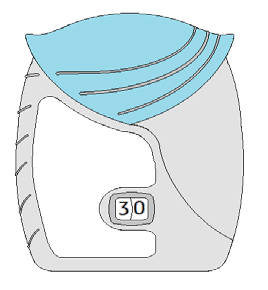
- Open the cover of the inhaler by sliding down to expose the mouthpiece until you hear a click. The counter will countdown by one number.
- Breathe out fully to empty the lungs while holding the inhaler away from your mouth.
- Put the mouthpiece firmly between your lips and take one quick, forceful breath in through your mouth. Be careful not to cover the vent with your fingers when inhaling.
- Hold your breath for about 10 seconds.
- Remove the inhaler from your mouth.
- Close the inhaler by sliding the cover up and over the mouthpiece as far as it will go.
Dry powder inhaler: Respiclick
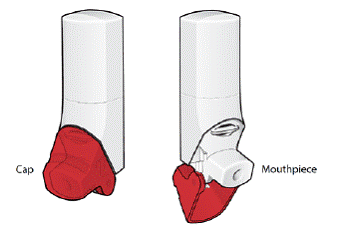
- Open the cap all the way back until you hear a “click”.
- Breathe out through your mouth to empty the lungs, not into the inhaler mouthpiece.
- Put the mouthpiece in your mouth and close your lips around it.
- Breathe in deeply through the mouth.
- Hold your breath for about 10 seconds.
- Remove the inhaler from your mouth and close the cap.
- Repeat the previous steps if another dose is needed.
Respimat (Slow-Moving Mist Inhaler)
To assemble and prepare
- Press the safety catch button while firmly pulling the clear base straight off with your other hand. Be careful not to touch the piercing element.
- Write the discard by date on the label (number of months from today’s date).
- Insert the narrow end of your medication cartridge into the inhaler.
- Place the inhaler on a flat surface and push down firmly until it clicks into place.
- Replace the clear base by aligning the notch with the safety catch button and slide together until it clicks.
- With the cap closed, turn the clear base in the direction of the arrows on the label until it clicks.
- Push on the small, circular opening tab until the cap snaps fully open.
- With the inhaler pointed toward the ground, press the dose-release button. Look for a mist.
Repeat these steps until 4 visible mists have been dispensed.
This inhaler may or may not be used with a spacer; follow the instructions of your medical provider or respiratory therapist.
Daily Use
- With the cap closed, turn the clear base in the direction of the arrows on the label until it clicks.
- Open the hinged cap by pushing up on the small, circular tab until the cap snaps fully open.
- Breathe out slowly and fully away from the inhaler to empty the lungs. Close your lips around the mouthpiece without covering the air vents.
- Point the inhaler to the back of your throat. While taking a slow, deep breath in through your mouth, press the dark gray dose-release button and continue to breathe in.
- Hold your breath for 10 seconds or for as long as it is comfortable.
Questions?
This sheet is not specific to your child, but provides general information. If you have any questions, please contact your clinic or provider.
Reviewed 2/2024
This page is not specific to your child, but provides general information on the topic above. If you have any questions, please call your clinic. For more reading material about this and other health topics, please call or visit Children's Minnesota Family Resource Center library, or visit www.childrensmn.org/educationmaterials.
© 2024 Children's Minnesota

